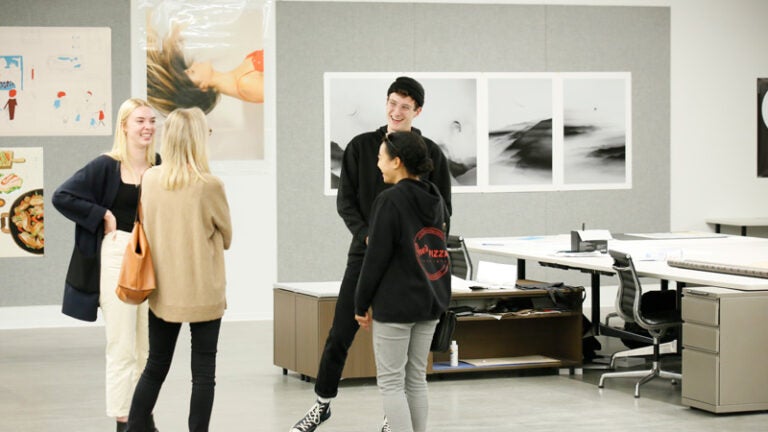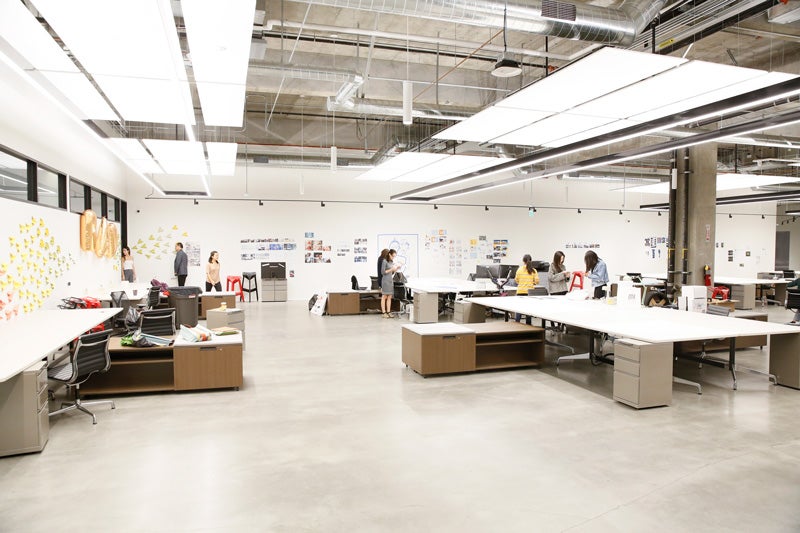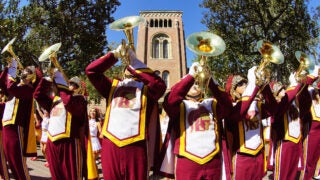
The USC Roski Open Studios in February 2020 in Los Angeles. (Photo/Ryan Miller)
USC Students Thrive in the Heart of L.A’s Art Scene
USC art and design students build creative ties in the midst of L.A.’s Arts District.
Downtown Los Angeles’ Arts District is home to a thriving creative community that has grown to include galleries, museums, studios and — more recently — USC art students.
Last year, Dean Haven Lin-Kirk led the USC Roski School of Art and Design’s expansion into the Arts District with a 15,000-square-foot studio for graduate-level design students. Now, the Roski Graduate Building has increased its footprint, nearly doubling in size and adding 16 studios for USC art students in the MFA program, a media editing room, a library, collaboration spaces and a dedicated room for master’s students studying curatorial practices. Student work will be showcased in a 2,000-square-foot gallery space that will be open to the public. It’s all located in the At Mateo complex.
As the school continues to grow in size and stature, the downtown expansion will bring exposure and opportunities to our grads
Dean Haven Lin-Kirk
“As the school continues to grow in size and stature, the downtown expansion will bring exposure and opportunities to our grads,” Lin-Kirk says.
The bold move brings together the school’s three master’s degree programs, enabling USC art and design students to collaborate and foster ties with each other and the Arts District community of creative professionals and artists.
A new makerspace at the site offers high-tech printing equipment, including 3D printers, a vinyl cutter and an industrial laser. Graduate students can also access a private video-editing space with color-calibrated displays and studio monitors in a room lined with acoustic panels.
USC Art Students Continue Creating during COVID
Due to the COVID-19 pandemic, all USC Roski buildings remain closed during the fall 2020 semester, including Watt and Harris halls on the University Park Campus, the Roski Studios Building at 30th and Flower streets and the Graduate Building in the Arts District.

However, art and fabrication labs are still in operation, using a service bureau model. USC art students can leave materials and projects that require help from lab technicians at a dedicated dropoff station. They return to collect the items from a separate pickup spot, minimizing person-to-person contact.
The school is also holding virtual talks with artists and other events online, in addition to promoting outdoor art installations that ensure visitors can maintain a safe distance. Previous discussions with artists also are available to view on demand.



